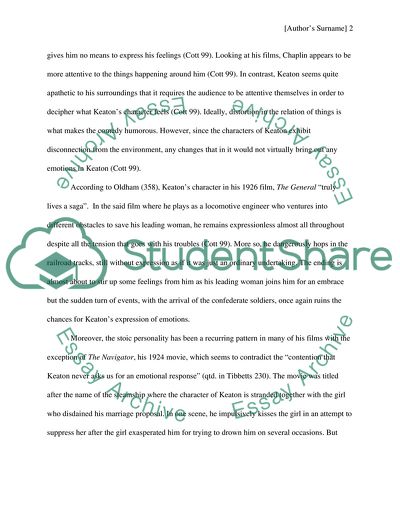Cite this document
(Silent Pictures Come to Life: The Panache of Keaton & Chaplin Research Paper, n.d.)
Silent Pictures Come to Life: The Panache of Keaton & Chaplin Research Paper. Retrieved from https://studentshare.org/visual-arts-film-studies/1735852-caomparision-between-buster-keaton-and-charles-chaplin-style-of-physical-comedy
Silent Pictures Come to Life: The Panache of Keaton & Chaplin Research Paper. Retrieved from https://studentshare.org/visual-arts-film-studies/1735852-caomparision-between-buster-keaton-and-charles-chaplin-style-of-physical-comedy
(Silent Pictures Come to Life: The Panache of Keaton & Chaplin Research Paper)
Silent Pictures Come to Life: The Panache of Keaton & Chaplin Research Paper. https://studentshare.org/visual-arts-film-studies/1735852-caomparision-between-buster-keaton-and-charles-chaplin-style-of-physical-comedy.
Silent Pictures Come to Life: The Panache of Keaton & Chaplin Research Paper. https://studentshare.org/visual-arts-film-studies/1735852-caomparision-between-buster-keaton-and-charles-chaplin-style-of-physical-comedy.
“Silent Pictures Come to Life: The Panache of Keaton & Chaplin Research Paper”, n.d. https://studentshare.org/visual-arts-film-studies/1735852-caomparision-between-buster-keaton-and-charles-chaplin-style-of-physical-comedy.


